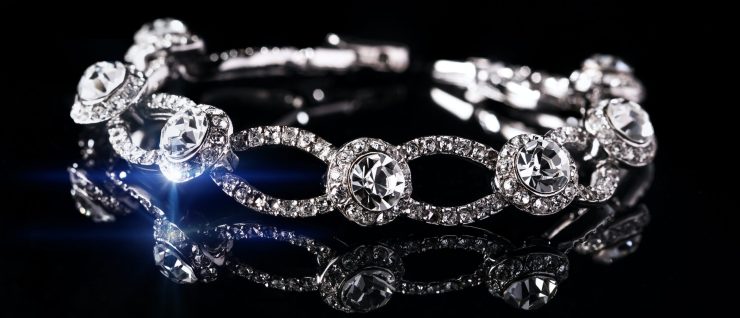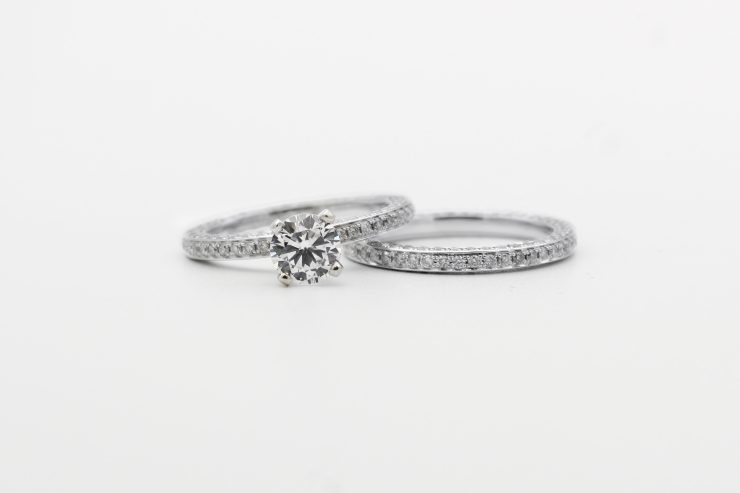Diamond certification serves as an official documentation issued by a gemological laboratory that evaluates and describes a diamond’s key characteristics. These characteristics typically include the famous “4 Cs”: carat weight, cut, color, and clarity, along with other data such as measurements, polish, symmetry, and fluorescence. A certification report is not a valuation or appraisal of the stone’s worth but rather an objective and standardized assessment of its quality attributes. The importance of certification lies in its ability to remove subjectivity from the sales process. Without a certificate, sellers must rely on a buyer’s personal judgment or the buyer’s chosen expert, which can introduce bias or inconsistencies. In contrast, certified diamonds are accompanied by an unbiased third-party report, allowing for clearer communication and transparency between seller and buyer. This level of standardization can play a crucial role in ensuring a seller receives the most accurate and competitive price for their diamond.

The Reputation and Authority of GIA and AGS
Among the various gemological labs in the diamond industry, two institutions stand out for their rigor, consistency, and global recognition: the Gemological Institute of America (GIA) and the American Gem Society (AGS). The GIA, founded in 1931, is widely regarded as the foremost authority in gemology and was responsible for establishing the 4 Cs system that has become the international standard. The AGS, established in 1934, is equally respected, particularly for its scientific approach to diamond grading and its emphasis on cut quality. What makes these two institutions valuable in the sales process is their unwavering commitment to impartiality and accuracy. Diamonds certified by GIA or AGS tend to command higher trust among buyers because the grading is perceived as more consistent and less lenient compared to other labs. While other labs may issue reports, they can sometimes inflate grades, leading to discrepancies between perceived and actual value. This discrepancy can make uncertified or non-GIA/AGS certified diamonds harder to sell at a premium price or may prompt buyers to discount their offers significantly to hedge against uncertainty.
Market Perception: Why Buyers Prefer Certified Diamonds
From a buyer’s perspective, certification greatly reduces the risk involved in purchasing a diamond. When a diamond comes with a GIA or AGS certificate, the buyer can be confident that the stone’s qualities are well-documented and trustworthy. This confidence translates into a willingness to pay a higher price. In contrast, uncertified diamonds or those with less reputable certification may be treated with skepticism, forcing sellers to accept lower offers. For resale, a certified diamond can also be more easily compared with others in the marketplace, allowing buyers to assess value with greater precision. Especially in online marketplaces, consignment retailers, or auctions, certification becomes a non-negotiable factor, often acting as a requirement for listing the stone in the first place. Some buyers even restrict their purchasing considerations exclusively to GIA- or AGS-certified stones. As a result, sellers who possess such certificates can target a broader, more discerning, and more financially capable segment of the market. This broader exposure can lead to competitive bidding and a maximized sale price.
Certification and Transparency in Online Selling
The rise of digital diamond marketplaces has further emphasized the importance of certification. Websites that allow private individuals or dealers to sell diamonds—whether through direct sales or consignment—usually mandate a recognized certificate from a major lab like GIA or AGS. The reason is simple: online buyers cannot physically examine the diamond before purchase, so they rely heavily on the information contained in the certificate. Platforms such as Worthy, Blue Nile, or James Allen often have strict intake policies that only accept diamonds with GIA or AGS reports due to their credibility. Furthermore, these platforms use the certification data to automatically calculate estimated resale prices based on comparable stones. The absence of a certificate either disqualifies the diamond from listing or places it at a significant pricing disadvantage. Even in peer-to-peer sales on general marketplaces, buyers are more likely to respond favorably to diamonds that are backed by trustworthy, third-party documentation. Therefore, certification doesn’t merely help the seller obtain a better price—it often determines whether the diamond can be sold at all.
Certified Diamonds and Insurance: Added Value for Buyers
One often overlooked aspect of certification is its relevance to post-sale considerations such as insurance. Most insurers require documentation to determine a diamond’s replacement value. A certificate from GIA or AGS serves as a reliable and neutral basis for such valuations. From the buyer’s point of view, knowing that a stone is certified by a top-tier lab adds long-term value because it simplifies the insurance process and enhances future resale or trade-in possibilities. This assurance contributes to higher buyer confidence, especially for high-value stones. Consequently, buyers may be more willing to stretch their budget for a certified diamond, knowing they have proper documentation that secures their investment. This added utility translates into a higher willingness to pay. For sellers, this means that presenting a certified diamond may unlock greater financial value not only because of the documented quality but also because of the added convenience and peace of mind the certification provides for future use.

Certification as a Tool for Price Negotiation
When selling a diamond, price negotiation is almost inevitable. Having a certificate—especially one from a highly respected institution like the GIA or AGS—gives sellers a factual foundation during price discussions. Rather than relying on vague descriptions such as “eye clean” or “good color,” the seller can point directly to the certified grades for color, clarity, cut, and carat weight. This eliminates ambiguity and weakens the buyer’s ability to claim uncertainty as a bargaining tactic. Furthermore, certification can help sellers justify premium pricing. For instance, if a diamond has excellent symmetry and polish or if it receives a top-tier cut grade (such as “Ideal” from AGS or “Excellent” from GIA), those features are quantifiable and can be used to negotiate upward. Without a certificate, sellers often face a disadvantage, as buyers may assume worst-case scenarios about quality and use that perception to drive down offers. In essence, certification arms the seller with authoritative data that can be strategically leveraged to secure a higher final price.
The Impact of Certification on Appraisal and Consignment Sales
In consignment sales—where diamonds are placed with retailers or dealers who sell them on behalf of the owner—certification is often a prerequisite. Retailers and auction houses typically require a GIA or AGS certificate to accurately market the diamond to their clientele. The certification helps these professionals describe the diamond’s qualities transparently, reducing liability and increasing customer confidence. Additionally, appraisers frequently use certification data to prepare formal valuation reports. Without a certificate, appraisers must conduct more extensive testing, which can result in higher fees or less precise assessments. For the seller, this means additional time, cost, and potentially a lower valuation due to conservative grading in the absence of documentation. In contrast, when a diamond is accompanied by a recognized certificate, appraisers can provide more confident valuations, and consignment partners can promote the stone more effectively, often commanding better display placement and more aggressive sales strategies, all of which contribute to maximizing the final sale value.
Recutting and Re-certifying: When Certification Boosts Long-Term Value
In some cases, a diamond may be uncertified or may carry an outdated or less trusted certificate. In such situations, sellers might consider having the diamond re-certified, particularly if they are aiming for the highest return. If the stone has significant resale potential—such as larger carat weights or high clarity—it could also be worthwhile to have it professionally recut or repolished prior to submission. This process is often done to improve cut quality, which is a major factor in perceived beauty and market value. Once improved, the diamond can be submitted to GIA or AGS for certification, potentially resulting in a higher grade for one or more attributes. While this involves upfront cost and a level of risk, it can dramatically enhance marketability and resale price, especially in competitive sales channels. Sellers considering this route should consult with a reputable jeweler or gemologist to assess whether the investment in recertification and minor adjustments is likely to yield a positive return.
Certificates and Global Market Accessibility
Another major benefit of GIA and AGS certification is access to the global diamond marketplace. Buyers from around the world trust these institutions, making international transactions more feasible and secure. In regions where buyer protection laws are less stringent or where physical inspection is impractical, certification acts as a universally accepted standard. A GIA or AGS certificate helps bridge cultural and legal differences by providing consistent and transparent information about the stone. For instance, Asian and Middle Eastern markets often place a premium on high-color, flawless stones with strong certificates. In European markets, traceability and laboratory reputation are especially important. The presence of a globally recognized certificate can also facilitate cross-border payments, shipping, and customs clearance, as authorities and buyers alike can verify that the diamond is of genuine quality and not misrepresented. Therefore, certification not only maximizes price through transparency and trust but also expands the seller’s reach to a wider, more diverse, and competitive set of buyers.
Summary: Why Certification is a Strategic Asset in Diamond Sales
Ultimately, the presence of a GIA or AGS certificate transforms a diamond from a subjective object of beauty into an objectively assessed commodity. This transformation enables sellers to communicate the diamond’s quality in universally understood terms, improves buyer confidence, and allows for participation in the most lucrative selling platforms. From setting accurate expectations to justifying a higher asking price and accessing global markets, certification is an indispensable tool in the diamond sales process. While obtaining certification may come with an upfront cost, the benefits in terms of pricing leverage, speed of sale, and overall marketability often outweigh the investment. Sellers aiming to achieve the highest possible return on their diamond should consider certification not just as an optional formality but as a critical strategic asset.